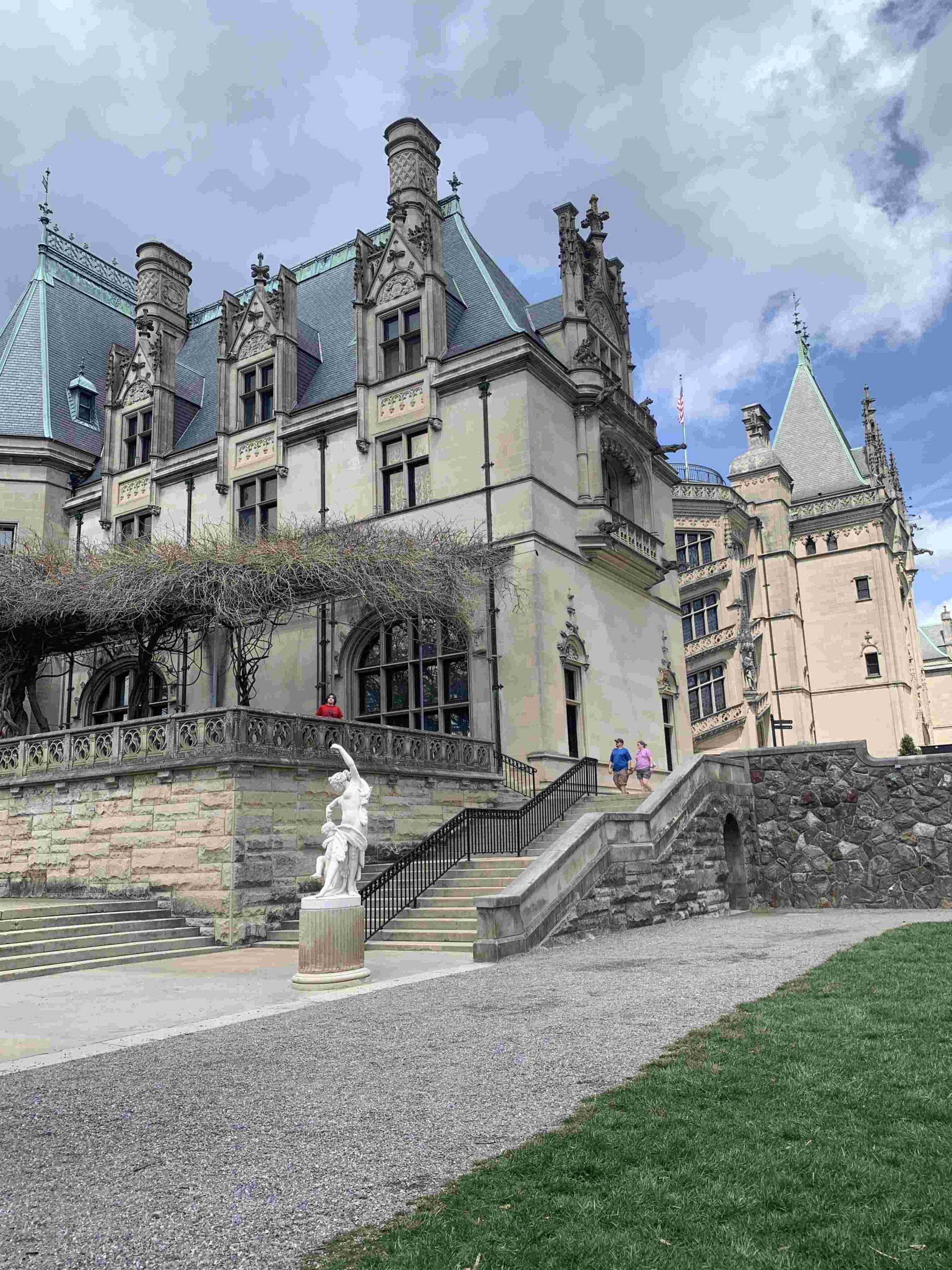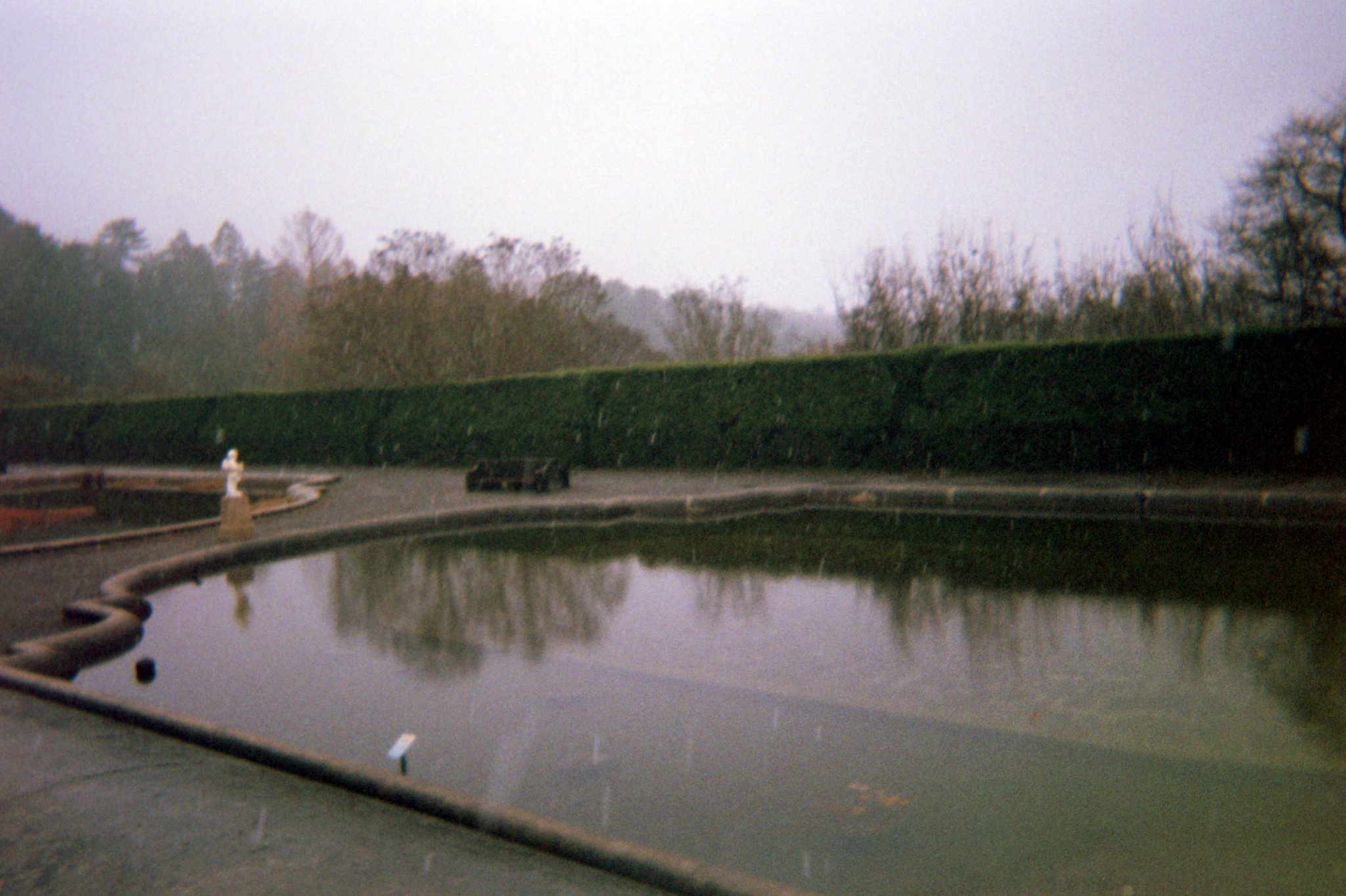The Dancing Lesson statue at Biltmore Estate is a striking white marble sculpture that graces the grounds of this historic property. Located near the stairway leading from the main house to the Italian Garden, this nude figure is a prominent feature of Biltmore’s open-air museum. Made of Italian white marble, the statue adds a touch of classical elegance to the estate’s already impressive collection of art and sculptures.
What is the History Behind The Dancing Lesson Statue?

The Dancing Lesson statue is shrouded in mystery when it comes to its origins. While it stands as a testament to the Vanderbilt family’s appreciation for fine art, specific details about its creation remain elusive. Here’s what we know:
- Artist: Unfortunately, the sculptor’s identity is unknown.
- Creation Date: The exact year of creation is not documented in available sources.
- Acquisition: It’s part of the Biltmore Estate’s extensive art collection, but details of its acquisition are not specified.
Despite the lack of historical specifics, the statue’s presence speaks volumes about the artistic vision that shaped the Biltmore Estate.
What Makes The Dancing Lesson Statue Unique?

The Dancing Lesson statue stands out for several reasons:
- Material: Crafted from high-quality Italian white marble
- Subject: Depicts a nude figure, which is relatively rare in the estate’s outdoor sculpture collection
- Location: Prominently placed near the transition between the house and the Italian Garden
- Artistic Merit: Contributes to Biltmore’s status as an open-air museum
Its unique features make it a focal point for visitors exploring the estate’s grounds.
How Can Visitors Experience The Dancing Lesson Statue?
Experiencing The Dancing Lesson statue is part of the broader Biltmore Estate visit. Here’s how you can include it in your tour:
- Self-Guided Tours: Explore the gardens at your own pace
- Guided Tours: Join estate tours that cover the outdoor sculptures
- Photography: Capture the statue’s beauty (check estate policies on photography)
- Seasonal Views: Visit during different seasons to see how changing light affects the marble
Remember, the statue is outdoors, so weather conditions may impact your viewing experience.
What Are the Best Times to View The Dancing Lesson Statue?
Timing your visit can enhance your appreciation of The Dancing Lesson statue:
| Time of Day | Advantage |
|---|---|
| Early Morning | Soft light for photography |
| Midday | Clearest visibility |
| Late Afternoon | Warm light enhances marble’s glow |
| Special Events | Potential for unique lighting setups |
Consider the season as well, as the surrounding gardens will change throughout the year.
What Other Attractions Complement The Dancing Lesson Statue?
The Dancing Lesson statue is just one part of Biltmore’s rich artistic landscape. Nearby attractions include:
- The Italian Garden
- Biltmore House architecture
- Other outdoor sculptures
- Scenic walking trails
- The Conservatory
These elements combine to create a comprehensive cultural experience that goes beyond a single statue.
How Does The Dancing Lesson Statue Fit into Biltmore’s Artistic Vision?
The Dancing Lesson statue exemplifies Biltmore’s commitment to fine art:
- It represents classical sculpture traditions
- Enhances the estate’s outdoor spaces
- Contributes to the open-air museum concept
- Reflects the Vanderbilt family’s artistic tastes
- Provides a focal point for contemplation and appreciation
This statue, along with other artworks, transforms Biltmore from a mere historic house into a comprehensive cultural destination.
What Preservation Efforts Protect The Dancing Lesson Statue?
Preserving outdoor sculptures like The Dancing Lesson is crucial. Biltmore’s conservation efforts likely include:
- Regular cleaning and maintenance
- Protection from extreme weather conditions
- Monitoring for signs of wear or damage
- Possible restoration work as needed
These efforts ensure that future generations can continue to enjoy this marble masterpiece.
How Can Art Enthusiasts Learn More About The Dancing Lesson Statue?
For those keen to delve deeper into The Dancing Lesson statue’s artistry:
- Inquire about specialized art tours at Biltmore
- Research Italian marble sculpture techniques
- Compare with other outdoor sculptures on the estate
- Consult Biltmore’s curatorial staff for insights
- Explore books on Gilded Age art collections
Engaging with the statue’s context can enrich your appreciation of its artistic value.
What Impact Does The Dancing Lesson Statue Have on Visitors?
The Dancing Lesson statue affects visitors in various ways:
- Provides a visual anchor in the landscape
- Sparks conversations about art and history
- Offers a moment of reflection amidst nature
- Enhances the overall aesthetic experience of Biltmore
- Serves as a memorable photo opportunity
Its presence contributes to the lasting impressions visitors take away from their Biltmore experience.
Remember, The Dancing Lesson statue is more than just a decorative element; it’s a piece of Biltmore’s living history, inviting visitors to pause, observe, and connect with the artistic legacy of this grand estate.
References:
– https://www.biltmore.com/blog/the-art-of-biltmores-open-air-museum/
– https://www.alamy.com/a-white-marble-statue-the-dancing-lesson-statue-flanks-the-biltmore-house-at-the-biltmore-estate-in-asheville-nc-usa-image244266789.html
– https://www.hippostcard.com/listing/biltmore-nc-nude-statue-of-the-dancing-lesson-1930s-white-border-postcard/16190196
